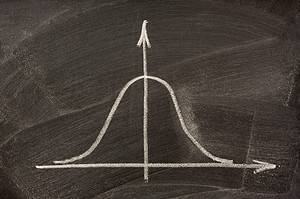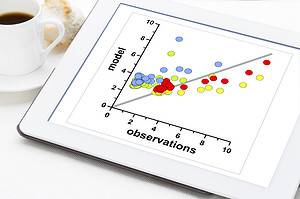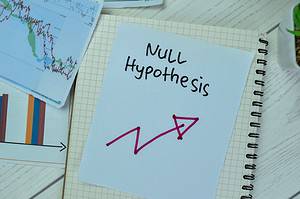
Step-by-Step Guide to Project Selection
Updated:The purpose of Lean Six Sigma is to identify opportunities for improving organizational processes. One of the challenges is the selection of projects for improvement teams to work on. Let’s learn more about how to select impactful projects. Both Lean and Six Sigma projects are used to improve organizational processes. Improvement teams are formed. DMAIC […]
Read more
Pooled Standard Deviation
Published:How do you calculate the overall standard deviation of multiple groups or samples? You can’t just add them up and divide by the number of groups, like you do with averages. Let’s see how we can do it correctly.
Read more
Navigating Data Analysis: The Importance of Testing for Normality
Updated:Is your data normal? Oh no! Is that a problem? The concept of data normality can be important when using certain statistical tools to make data-driven decisions.
Read more
Making the Most of Outliers: Leveraging Insights for Improvement
Updated:An outlier in the context of statistics means a value in your data set is significantly different from the other values. This might be a good or bad thing depending on the situation.
Read more
One Piece Flow
Published:Companies love their batch flow processes. But, a one-piece flow might be a more efficient approach to producing your products. Let’s learn a bit more about one-piece flow.
Read more
Mastering Positive Correlation Analysis: Tools and Techniques
Updated:Correlation is a statistical term of the relationship between two variables. You can have a negative correlation, positive correlation, or no correlation. Let’s see what a positive correlation is all about.
Read more
Ordinal Data
Published:If you have categorical or descriptive data that has a natural order, sequence, or preference, it would be defined as ordinal data. Since ordinal data is one of four common types of data, you should understand what it is and how you can use it.
Read more
Ordinal vs. Nominal Data: Which One Should You Choose?
Updated:When you have categorical data with a natural order or preference, you can call that ordinal data. When you describe data, you must first distinguish whether you are talking about numerical or categorical data. This is important for the proper selection and use of statistical and analytical tools. Categorical data is a type of data that […]
Read more
Operational Definition
Published:Would you and I agree what 50% cotton/50% polyester means if we saw a label on your shirt? Probably not. How about whether your order was delivered? Without good operational definitions, we would likely not agree on many things. Let’s see how we can overcome that gap.
Read more
Common Non-Parametric Tests and Their Applications
Updated:Several statistical tests have underlying assumptions of a specific type of distribution which is required for the test results to be valid. But what if your data distribution does not meet that assumption? A non-parametric test might help. There are several hypothesis tests which assume your data has a specific distribution. For example, a 2-sample […]
Read more
Using Paired T-Tests for Controlled Analysis
Updated:A paired t-test is a form of a two-sample t-test used in hypothesis testing. It is useful for answering questions about any significant differences for before and after comparisons.
Read more
Exploring the Null Hypothesis: Definition and Purpose
Updated:The null hypothesis, written as Ho is a subset of the larger topic of Hypothesis Testing. The null hypothesis is a statement about a specific condition of your data and allows you to draw important conclusions about that data.
Read more
Step-by-Step Guide to Understanding and Using Multiple Regression in Your Research
Updated:If you are trying to predict the outcome of a dependent variable by analyzing the relationship with several independent variables, then multiple regression may be your statistical tool of choice. Let’s examine multiple regression in more detail. Multiple regression is a statistical technique that allows you to analyze the relationship between a dependent variable and […]
Read more
Multi-Vari Chart
Published:As the Chinese proverb says, “a picture is worth a thousand words.” The multi-vari chart is such a picture. In a single graph, you will be able to understand the variation of your process. Let’s learn more.
Read more
Leptokurtic Distribution
Published:Sometimes your data isn’t a normal distribution. Sometimes, the curve is taller or shorter than the normal distribution. Is that a problem? We can answer that question by learning a little bit more about kurtosis and the leptokurtic distribution.
Read more
Lean Manufacturing: Improving Quality and Reducing Costs
Updated:Lean manufacturing seeks to get rid of the extra fat and waste in your process while seeking to build muscle in your production processes. Let’s see how.
Read more
Little’s Law: A Powerful Metric for Process Analysis
Updated:Your customers want to know when they can expect completion of their orders. Little’s Law, or Process Lead Time (PLT), is a simple way to calculate how long an order will take to complete.
Read more
The Role of Mura in Process Waste: Strategies for Minimizing Variation
Updated:The Toyota Production System, was developed around the elimination of the three types of deviations that represent the inefficient allocation of resources. The three types of deviations are muda, mura, and muri. Muda deals with waste and is often defined by the 7 wastes of lean. Mura is concerned with inconsistency and variation and may […]
Read more
Making Informed Decisions: The Power of Measurement System Analysis (MSA)
Updated:Making data-driven decisions is critical in today’s business environment, but can you trust your measurement system to give you meaningful data? Measurement System Analysis is the tool you need to know whether you can trust your data.
Read more
The Concept of Kaizen: The Key to Continuous Improvement
Updated:If your organization is too impatient to use a formal DMAIC approach to continuous improvement then Kaizen may be the tool for you.
Read more
Streamlining Production with Just-In-Time Manufacturing
Updated:Have you ever had to shut down your manufacturing line because major components haven’t arrived from your supplier? Have you ever had to rent extra warehouses for your finished goods? Just-in-time (JIT) manufacturing would prevent that from happening. Let’s see how that works.
Read more